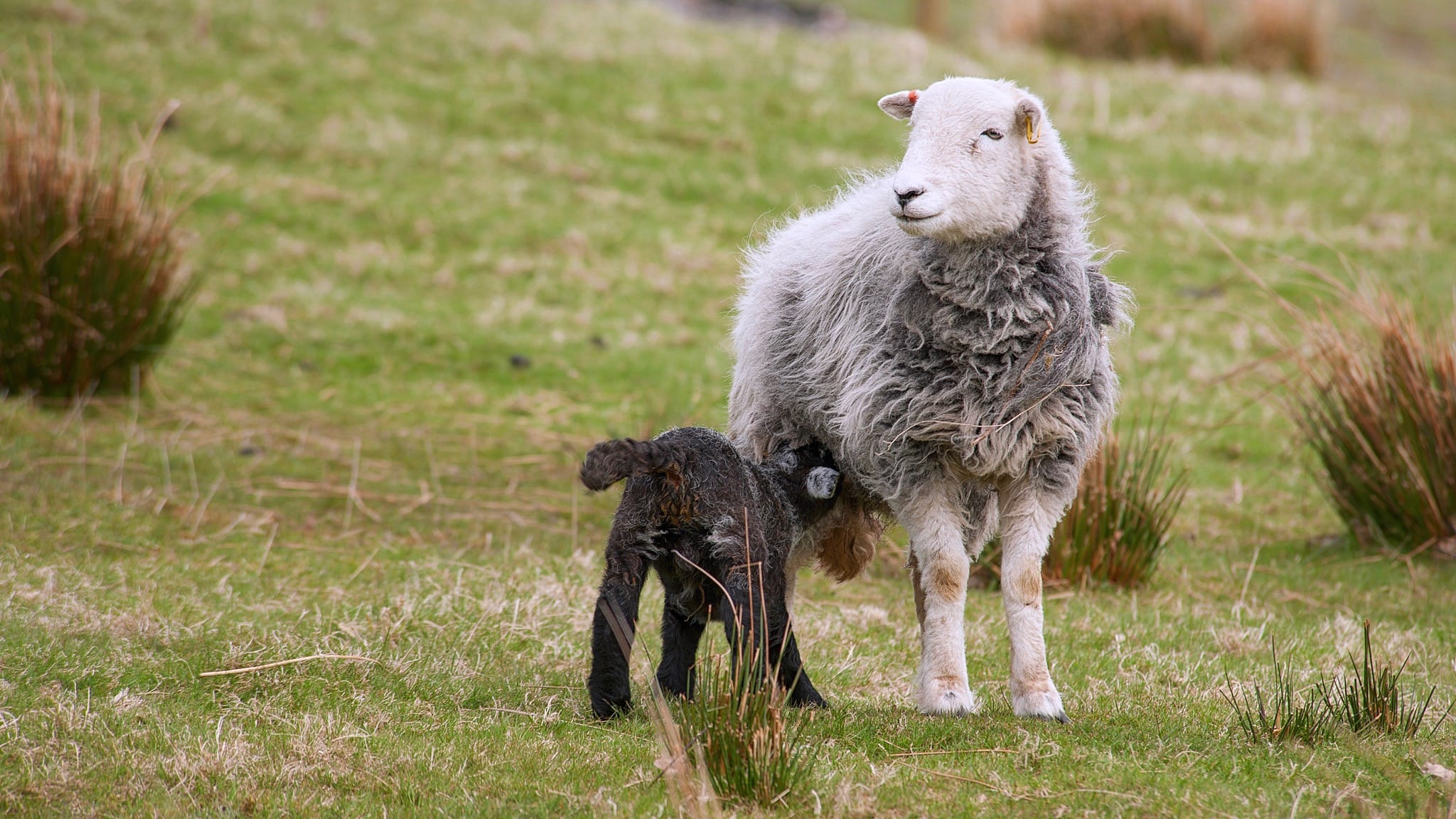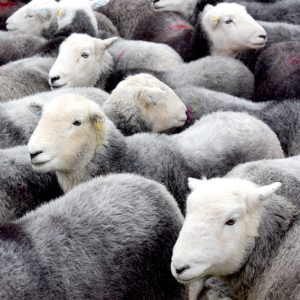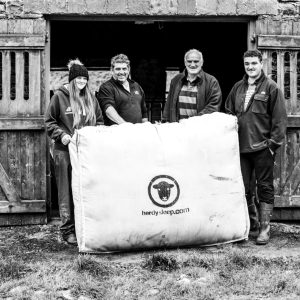Herdwicks & The Fells

This weekend is the Keswick Mountain Festival: a celebration of outdoor pursuits and glorious scenery. The Lake District is a landscape lauded all over the world. This was confirmed on 9th July 2017 when UNESCO granted the Lake District the status of World Heritage site as an important Cultural Landscape.
This is an important distinction: it recognises that the landscape of the Lake District isn’t totally natural, but rather a fine balance between the landscape as developed over millions of years and the guiding hand of man. A crucial component of the Lake District’s “look” are the Herdwick sheep, which roam freely across the fells and dales, grazing on grasses and other vegetation, and essentially serving as gardeners of the Lake District!
The management of Herdwicks on the Lake District fells is more involved than you think…
Preparing For The Fells
Once the last lambs of the flock have popped out and had their la’l bellies filled with colostrum milk from their mothers, it’s time to “doctor” them. They get injected with vaccines for preventable illnesses, wormed with an oral drench (as the parasites come to life again with the warmth), marked with the flock’s “smit mark” with greasy paint, tagged with their two 14-digit microchipped tags, and notched in their ears to show which farm they belong to. They’re sometimes sprayed too to stop blowflies laying eggs on them, otherwise some would be “struck”. There's a lot of “ick” to be protected from!
After doctoring, the yows (ewes) and their lambs are moved to the high fells. On the hardest Lakeland farms most, or even all, of the yows and lambs go back to the fell. For other farms the ewes with singles go on the hardest “intakes” (walled off land on the fellside), and those with twins go on slightly better fields where they can keep milking.
Returning To The Heaf
Herdwick lambs that go to the fell start learning to hold to their “heaf”, because their mothers return to the same area on the fell where they were born and reared, and teach their lambs the same attachment to place. If the lambs didn’t go to the fell and learn like this, the system would break down.
This “hefting” system allows the Lake District with its massive areas of Common Land (unfenced and collectively farmed, the largest in Great Britain) to be farmed. Each farm has a “stint” on the Common or multiple Commons and an agreed number of sheep that can graze that stint. Think of it as timeshare for fell farmers! This was based historically on the numbers of sheep that could be grazed in the valley bottom in the winter months.
Herdwick sheep stay with the farms through changes of tenancy or ownership because they are “heafed”, and it is in everyone’s interest that they do. So the sheep you see on the fells are descendants of the sheep that lived on the same land, and the surrounding fells, centuries, maybe even thousands of years ago. Perhaps we should get some Herdwicks on “Who Do Ewe Think Ewe Are”?
Farming In The Mountains
Farming the Lake District revolves around one simple reality: the short growing season for grass on the fells (mountains). Lake District farmers take advantage of this growing season in just the same way that the first settlers did maybe 5,000 years ago. Lambing is timed so that the lambs hit the ground as the grass starts to grow, and are reared through the lush and pleasant summer/autumn months when their mothers will get enough nutrition to milk them.
By December at latest the farms can only carry the core ewe flocks with help from the summer’s crop. So, in May and June, the valley bottom meadows are cleared of sheep, the walls repaired, the sheep kicked up the hill to the new grass, and the meadows allowed to flower and spurt into life. Soon, they are lush green carpets of grass and flowers, which will be made into hay (or haylage) in July or August.
And then, that’s when show season starts…





1 Comment
"I also give & bequeath to my said Son & Heir John Pearson all my sheep going & lying within the Liberty of Loweswater comon, namely the High Fell Sheep, Black Cragg sheep & Blackfell sheep"
and
" I give & dispose of all rest & residue of all my Personal Estate & the usage & profitt of all the said several heafs of sheep ..."
Chris